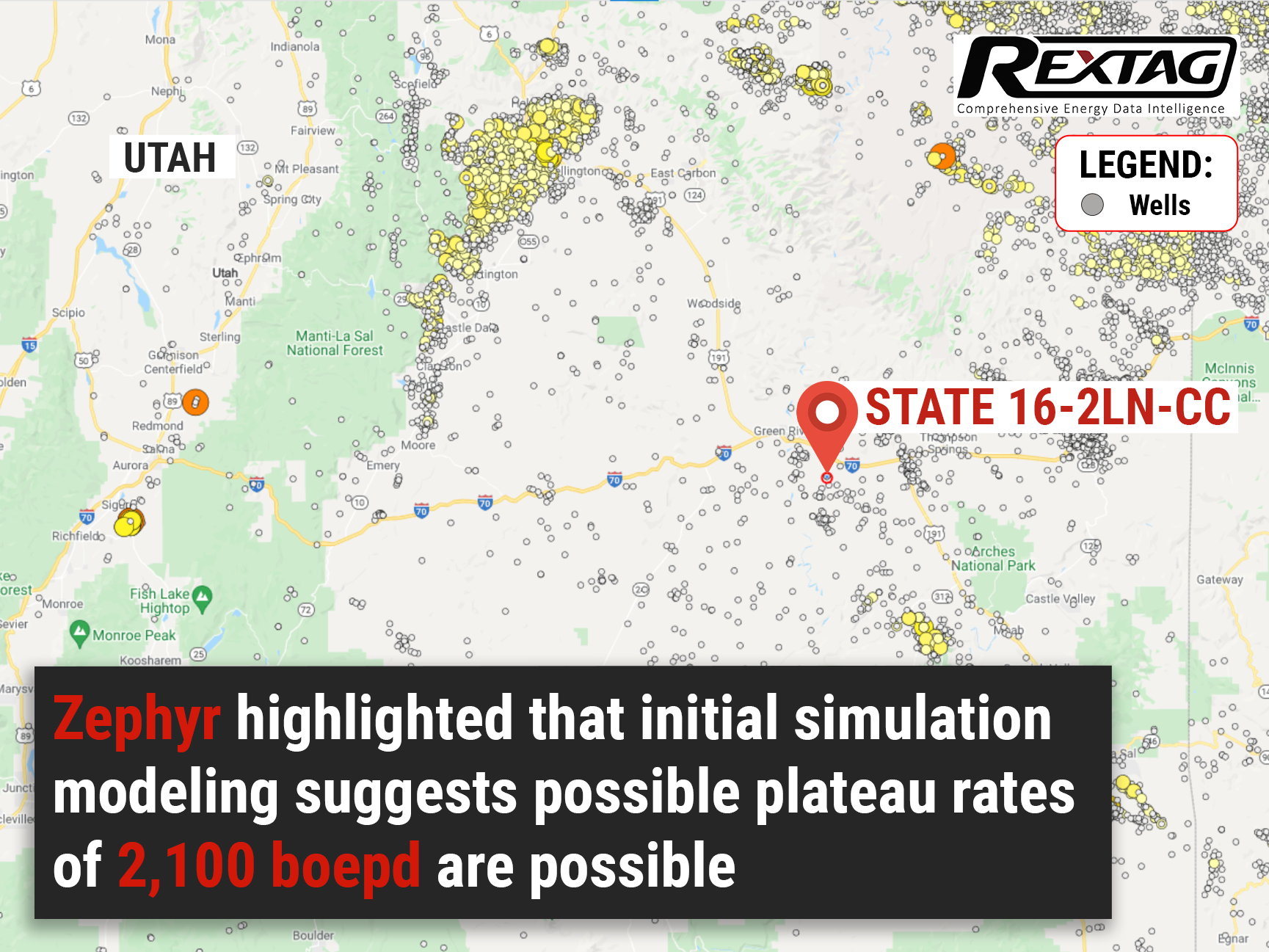Comprehensive Energy Data Intelligence
Information About Energy Companies, Their Assets, Market Deals, Industry Documents and More...
Northern Paradox Basins Rediscovered by Zephyr
01/17/2022
Zephyr Energy of the Rocky Mountains announced on Dec. 8 that its field testing of the State 16-2LN-CC well at its Paradox Basin project in Utah provided a substantial basis for further development.
Zephyr reported that after 23 days of production testing the well demonstrated the ability to extract a larger hydrocarbon resource than initially estimated. It is now planned to outfit the well and facilitate the sale and/or export of hydrocarbons.
The research may have allowed the discovery of eight high-grade hydrocarbon reservoirs under the opportunity that was initially being investigated. A total of 200 wells could be drilled, creating a potential resource of 125 million barrels of oil equivalent.
This milestone was achieved when the company's State 16-2LN-CC horizontal well became the first with a hydraulically-stimulated completion to flow hydrocarbons in the Northern Paradox Basin.
A rate-constrained daily rate of 716 barrels of oil equivalent per day (boepd) was achieved with limited pressure drawdown and a rate-constrained maximum rate of 1,083 boepd.
Based on initial simulation modeling, Zephyr concludes that 2,100 boepd plateau rates would be possible when the well is fully equipped and not rate-constrained.
In an investor presentation, Zephyr said that gas rates may reach plateaus of 10 million square cubic feet per day and 500 boepd of liquids.
Zephyr's predrill estimates of up to 0.85 million barrels of oil equivalent (mmboe) are significantly lower than the growth potential of State 16-2LN-CC resulting from production testing.
To maximize this potential, hydraulically stimulated resources must be developed instead of assuming that they are naturally fractured, as was thought before the evaluation of the most recent well data.
Zephyr forecasts that the reserve will produce strong economics for its new gas condensate wells based on a highly successful appraisal of the reserve. According to the company, up to 200 well locations are potentially available across the eight identified overlying reservoirs.
In light of the new production forecasts and realized oil prices of $65 per barrel and $3 per thousand cubic feet of gas, Zephyr calculates the well's net present value to be $12.5 million at a 10% discount rate (NPV-10).
Due to the substantial potential for an increase in project size, Zephyr's Board has committed to exploring the idea of a multi-well drilling program in the near future, as additional drilling could help better define and unlock the considerable potential value of this asset.
Zephyr's Board, however, will not rush into an investment in Paradox, according to Zephyr CEO Colin Harrington, and will only deploy company capital if the risks/rewards are favorable.
If you are looking for more information about energy companies, their assets, and energy deals, please, contact our sales office mapping@hartenergy.com, Tel. 619-349-4970 or SCHEDULE A DEMO to learn how Rextag can help you leverage energy data for your business.
$690 Million Deal Moves Ahead: Crescent Energy to Complete Purchase of EP Energy's Uinta Assets
![$data['article']['post_image_alt']](https://images2.rextag.com/public/blog/56Blog_Crescent_Bought_EP_Energy's_Uinta_Assets.png)
Crescent Energy closed the acquisition of Uinta Basin assets in Utah that were previously owned by EP Energy for $690 million, a few hundred million dollars below the original price. The accretive deal increases Crescent's Rockies position and adds significant cash flow and a portfolio of high-quality oil-weighted undeveloped sites. In addition to its acquired Uinta assets, Crescent's pro forma year-end 2021 provided reserves totaled 598 million boe, of which 83% was developed, 55% was liquid, and its provided PV-10 was $6.2 billion.
BP's South Haynesville Natural Gas Passed MiQ’s Certification with Flying Colours: a Straight-A Student
![$data['article']['post_image_alt']](https://images2.rextag.com/public/blog/80026241-CE9F-4D33-AEA2-A0C67DDF1045.png)
BPX Energy achieved an admirably low level of methane emissions, ranking among the best performing players in Haynesville Shale, around 0.05%! And MiQ awarded the company with an A grade certification. BPX very well may be one of the cleanest natural gas producers in all of Texas.
![$data['article']['post_image_alt']](https://images2.rextag.com/public/blog/328_Blog_Why Are Oil Giants Backing Away from Green Energy Exxon Mobil, BP, Shell and more .jpg)
As world leaders gather at the COP29 climate summit, a surprising trend is emerging: some of the biggest oil companies are scaling back their renewable energy efforts. Why? The answer is simple—profits. Fossil fuels deliver higher returns than renewables, reshaping priorities across the energy industry.
![$data['article']['post_image_alt']](https://images2.rextag.com/public/blog/327_Blog_Oil Market Outlook A Year of Growth but Slower Than Before.jpg)
The global oil market is full of potential but also fraught with challenges. Demand and production are climbing to impressive levels, yet prices remain surprisingly low. What’s driving these mixed signals, and what role does the U.S. play?
![$data['article']['post_image_alt']](https://images2.rextag.com/public/blog/326_Blog_USA Estimated Annual Rail CO2 Emissions 2035.jpg)
Shell overturned a landmark court order demanding it cut emissions by nearly half. Is this a victory for Big Oil or just a delay in the climate accountability movement?